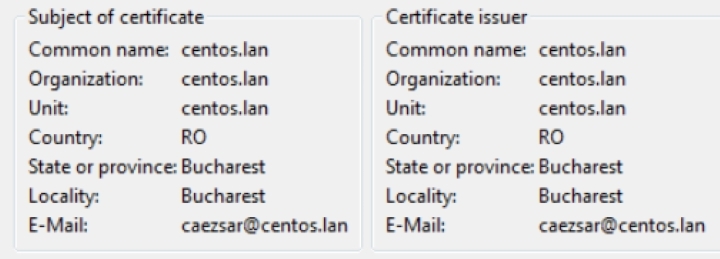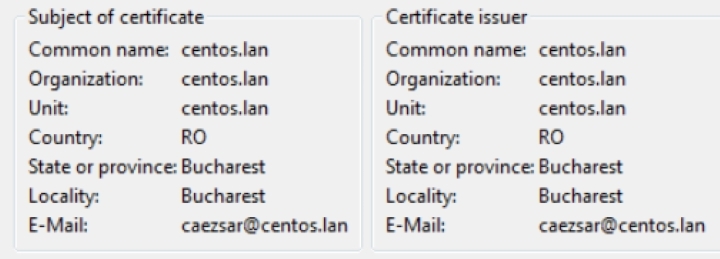
 Data Structure
Data Structure Networking
Networking RDBMS
RDBMS Operating System
Operating System Java
Java MS Excel
MS Excel iOS
iOS HTML
HTML CSS
CSS Android
Android Python
Python C Programming
C Programming C++
C++ C#
C# MongoDB
MongoDB MySQL
MySQL Javascript
Javascript PHP
PHP
- Selected Reading
- UPSC IAS Exams Notes
- Developer's Best Practices
- Questions and Answers
- Effective Resume Writing
- HR Interview Questions
- Computer Glossary
- Who is Who
Secure ProFTPD Connections Using TLS/SSL Protocol on RHEL/CentOS 7
Secure ProFTPD Associations Utilising the TLS/SSL Convention on RHEL/CentOS 7 includes executing Transport Layer Security (TLS) and Secure Attachment Layer (SSL) encryption for secure information transmission over ProFTPD, a well-known FTP server programme. By designing ProFTPD to utilise TLS or SSL, the communication between the FTP client and server is scrambled, guaranteeing privacy and judgement of the information being exchanged. This security degree secures touchy data, such as login qualifications, from being accessed or altered by unauthorised people. TLS/SSL certificates are used to set up secure associations and confirm the server, building trust between the client and the FTP server.
Methods Used
Generate and Configure SSL/TLS Certificates
Enable TLS/SSL Encryption
Generate and Configure SSL/ TLS Certificates
Creating and arranging SSL/TLS certificates for securing ProFTPD associations on RHEL/CentOS 7 includes the method of making and setting up advanced certificates to empower secure communication. SSL/TLS certificates can be obtained from a trusted certificate specialist or can be self-signed. These certificates contain cryptographic keys and are utilised to set up secure associations between the FTP client and server. The setup of ProFTPD is at that point balanced to utilise these certificates, guaranteeing that information transmitted over the FTP server is scrambled and secured from unauthorised access. This approach sets up a secure and trusted channel for information exchange, improving the general security of ProFTPD associations.
Algorithm
Choosing a Certification Specialist (CS) Select between conveying self-signed certificates and getting SSL or TLS certificates from a reputable CA.
Certificate creation for SSL/TLS On the off chance that self-signed certificates are required, give the SSL or TLS certificates using a programme like OpenSSL.
Indicate the certificate's subtle elements, such as the common title (CN), organisation, and key estimate, during the era process.
Configure ProFTPD: Open the ProFTPD arrangement record and find the SSL/TLS-related mandates. Overhaul the record to empower SSL/TLS bolster and indicate the ways to create SSL/TLS certificate files.
Certificate Chain (discretionary): In the case of utilising CA-signed certificates, ensure the certificate chain is legitimately arranged. This includes bringing in the CA's root certificate and halfway certificates, on the off chance that any exist, into the ProFTPD configuration.
Certificate Consents: Set fitting record consents for the SSL/TLS certificate records to guarantee, as it were, that the FTP server handle can get to them.
Restart ProFTPD: Spare the setup record and restart the ProFTPD benefit to apply the changes.
Output

Enable TLS /SSL Encryption
Empowering TLS/SSL encryption within the context of securing ProFTPD associations on RHEL/CentOS 7 includes designing the FTP server to utilise the TLS/SSL convention for secure communication. This handle guarantees that information exchanged between the FTP client and server is scrambled, securing it from unauthorised access and alteration. By adjusting the ProFTPD arrangement, chairmen can indicate the SSL/TLS convention adaptations, select solid encryption ciphers, and set other security parameters to set up a secure association. Empowering TLS/SSL encryption includes a basic layer of assurance for ProFTPD associations, improving the secrecy and astuteness of touchy data being transmitted over the network.
Algorithm
Recognise the ProFTPD arrangement record area (usually found at /etc/proftpd.conf or /etc/proftpd/proftpd.conf).
Open the ProFTPD arrangement record using a content editor.
Locate the segment related to SSL/TLS setup, regularly indicated by lines containing mandates like TLS or SSL.
Uncomment or include the essential orders to empower TLS/SSL encryption. These mandates may include:
TLSEngine on: Empowers the TLS/SSL engine.
SLog /path/to/tls.log: Indicates the path for the TLS/SSL log file.
SProtocol: Indicates the SSL/TLS convention forms to be utilised (e.g., TLSv1.2, TLSv1.3).
SCipherSuite: Indicates the permitted encryption cyphers (e.g., HIGH:MEDIUM:!aNULL:!MD5).
nfigure other TLS/SSL-related mandates based on your necessities and security arrangements. These orders may incorporate TLSOptions, TLSRSACertificateFile, TLSRSACertificateKeyFile, TLSVerifyClient, etc.
Save the changes to the ProFTPD arrangement file.
Restart the ProFTPD benefit to apply the unused arrangement. This will be done using the command systemctl restart proftpd.service.
Test the ProFTPD association by interfacing to the server using an FTP client that supports TLS or SSL. Confirm that the association is set up securely.
Monitor the TLS/SSL logs for any potential issues or mistakes and troubleshoot appropriately.
Output

Conclusion
This article gives a comprehensive guide on securing ProFTPD associations utilising the TLS/SSL convention on RHEL/CentOS 7. It clarifies the significance of actualizing TLS/SSL encryption for secure information transmission and diagrams the steps included in creating and designing SSL/TLS certificates. The article too covers empowering TLS/SSL encryption within the ProFTPD server setup, indicating convention adaptations, cypher suites, and other security parameters. By following this direct, chairmen can guarantee that ProFTPD associations are secured and delicate data is scrambled, upgrading the by and large security of FTP communication on RHEL/CentOS 7.

